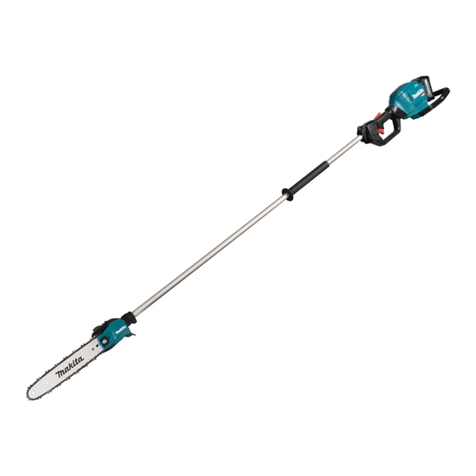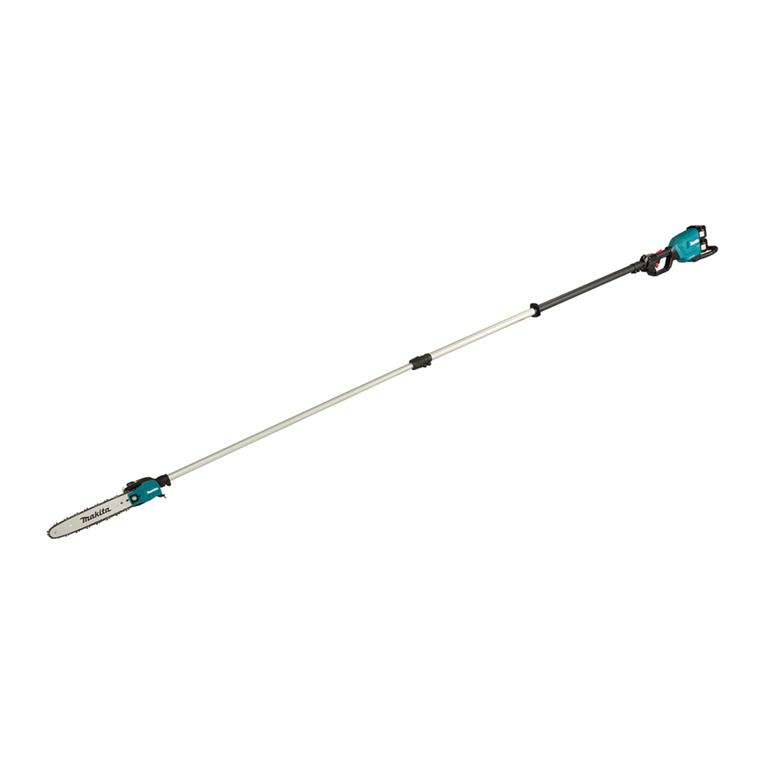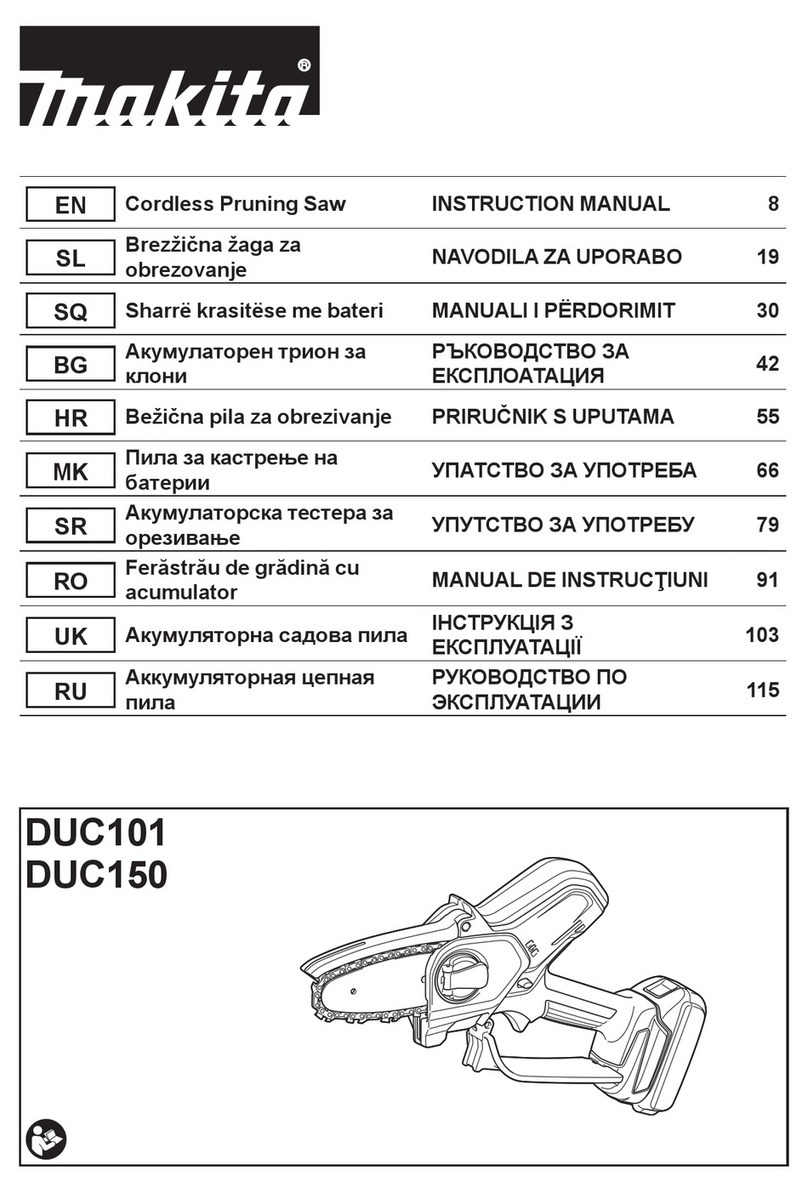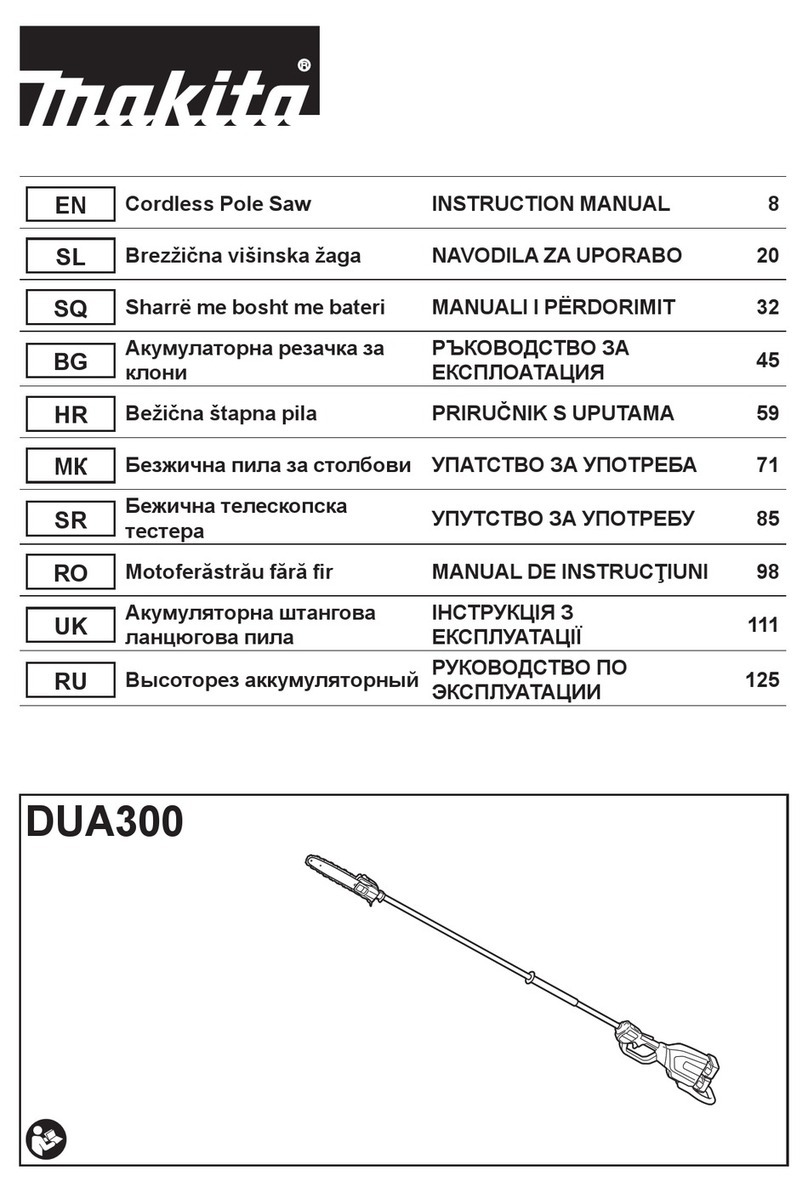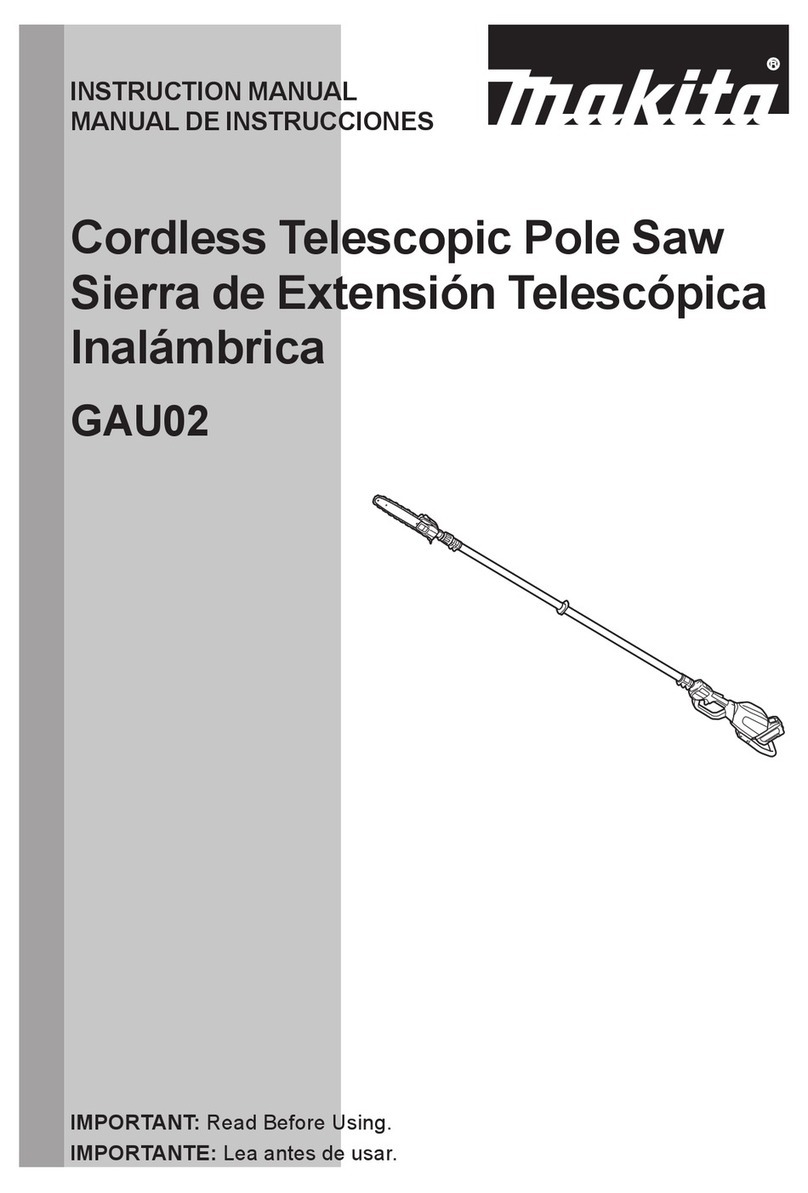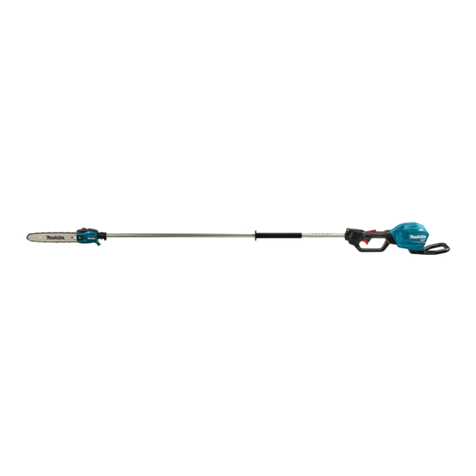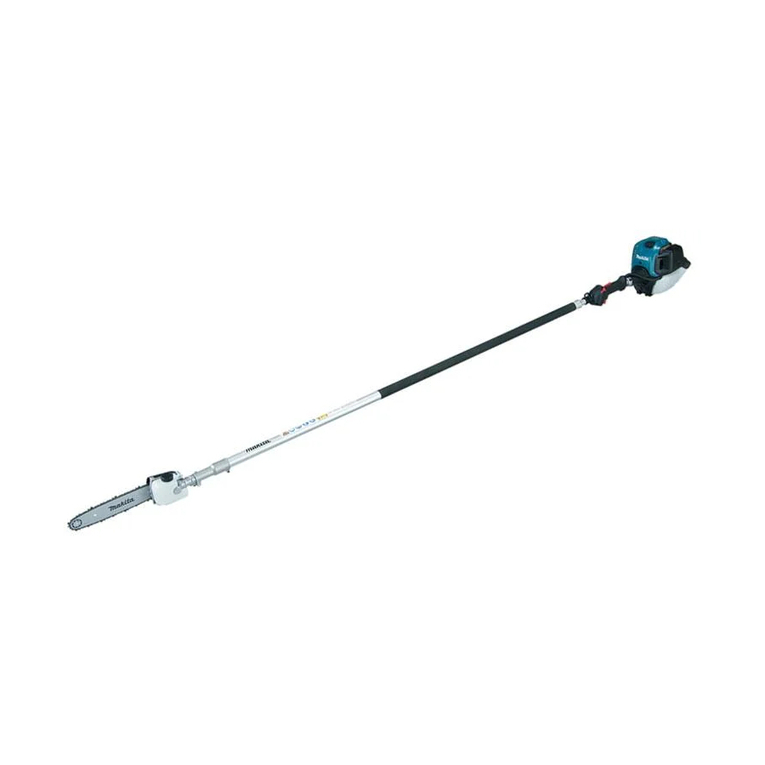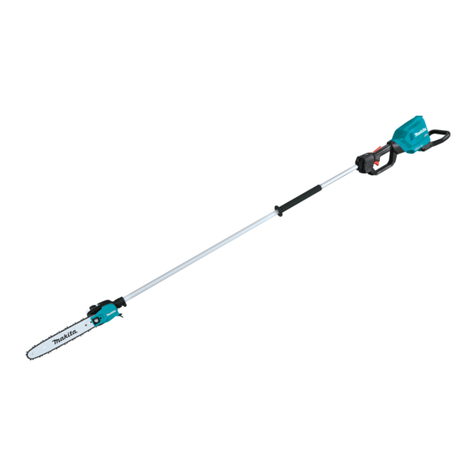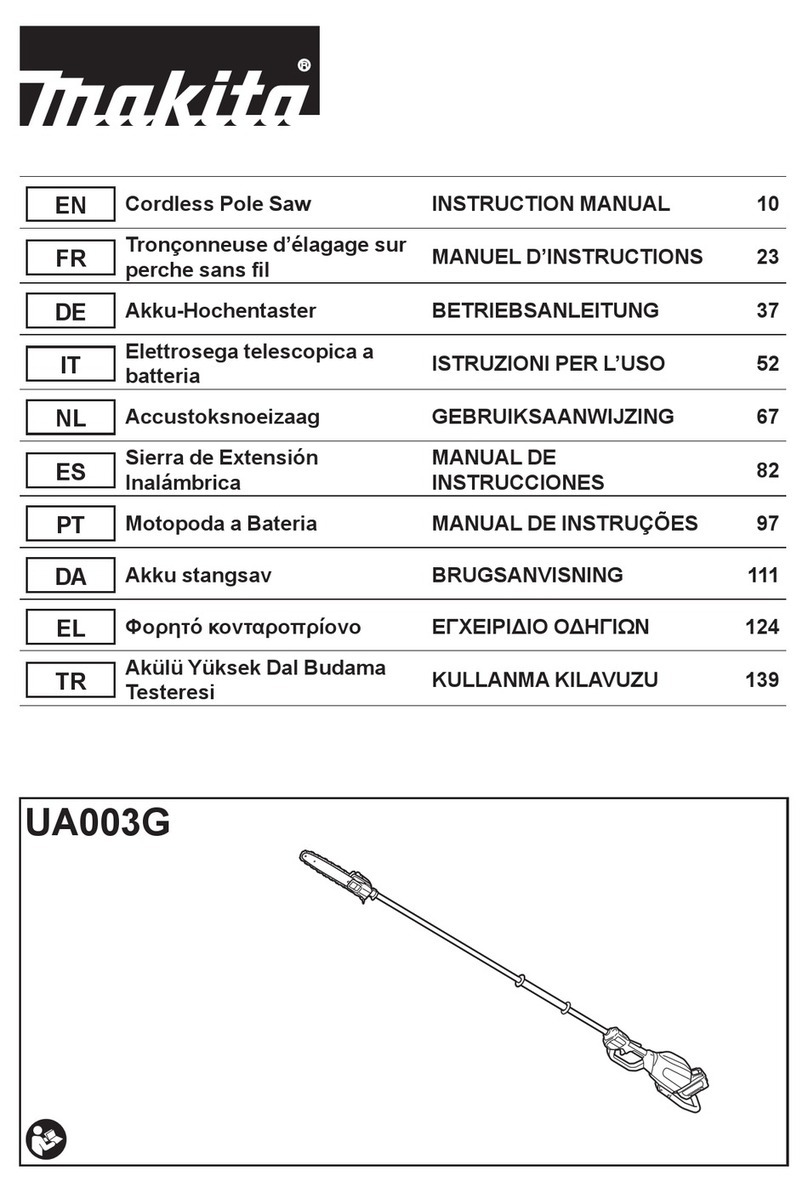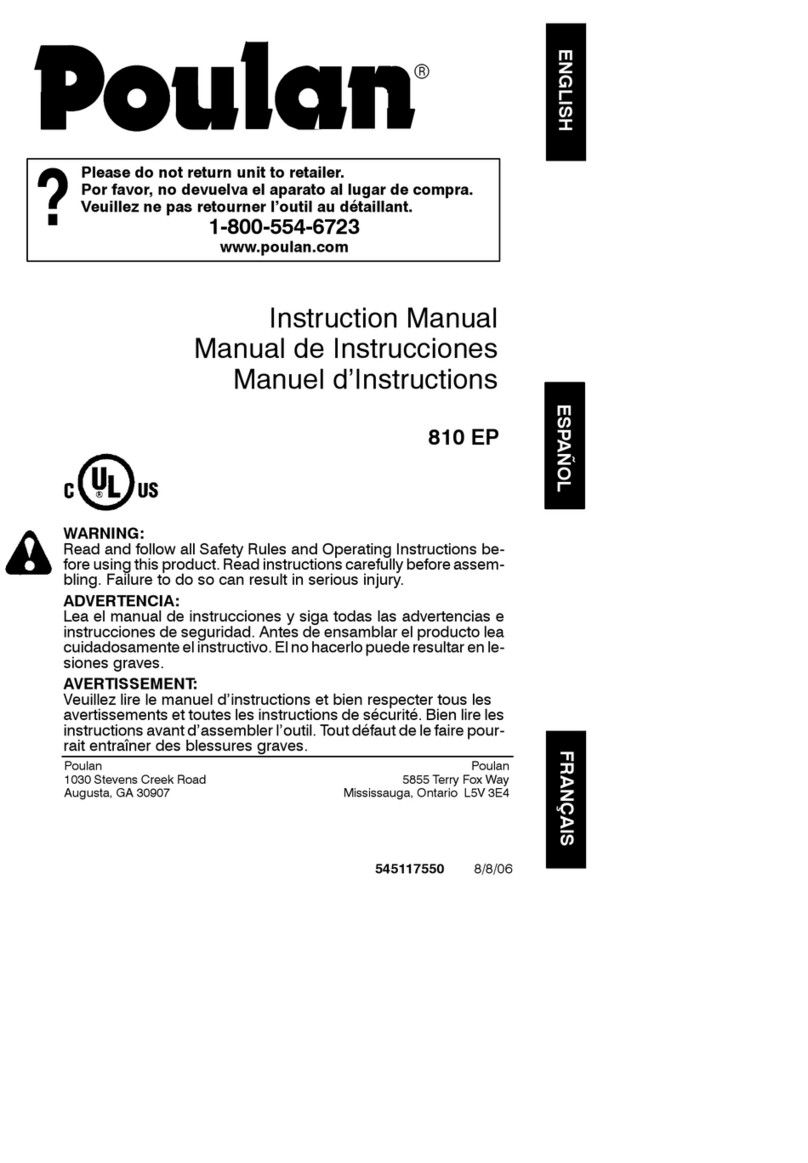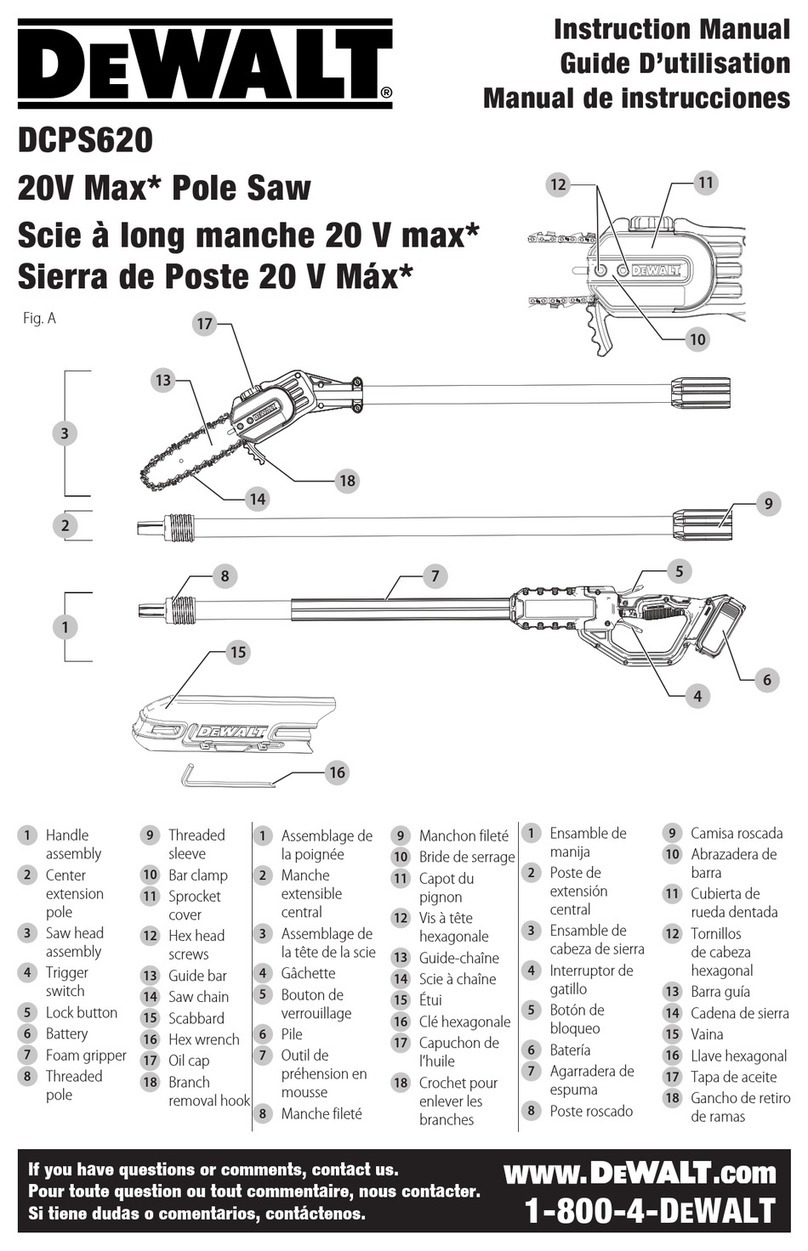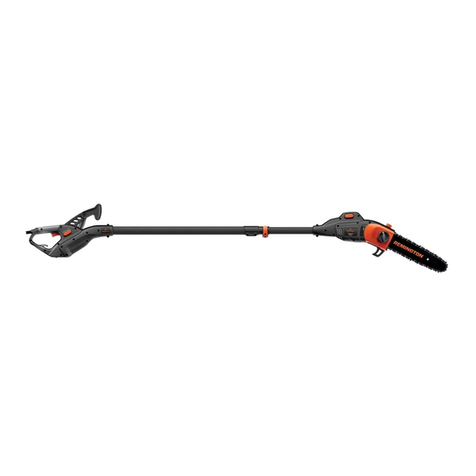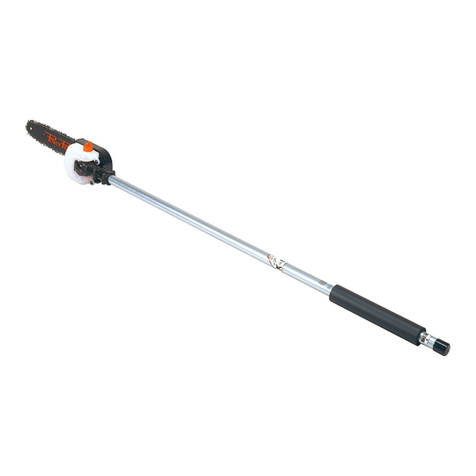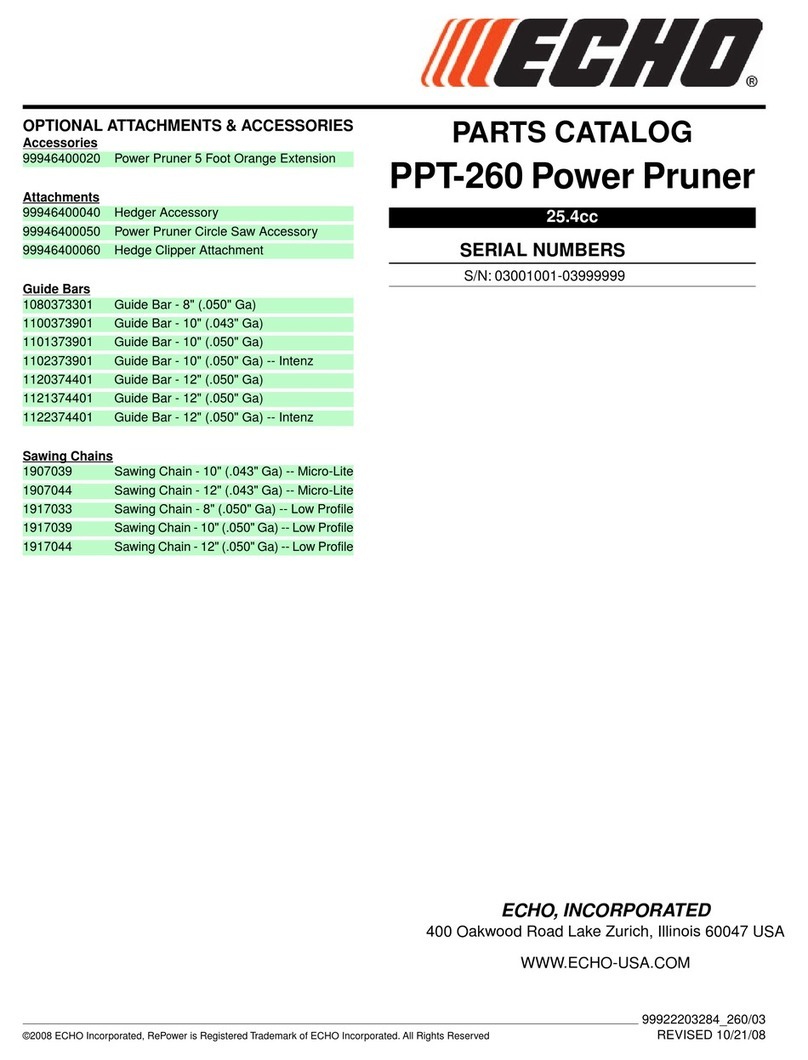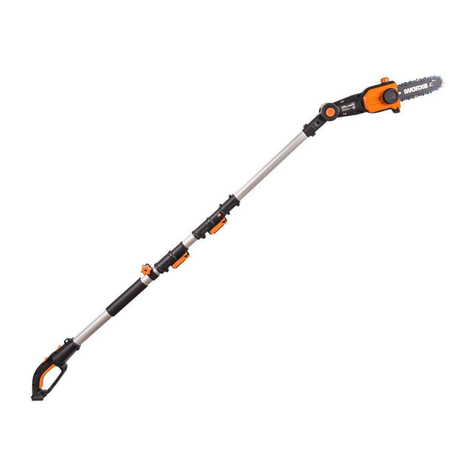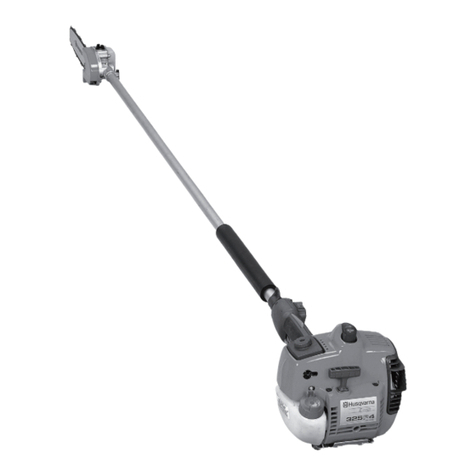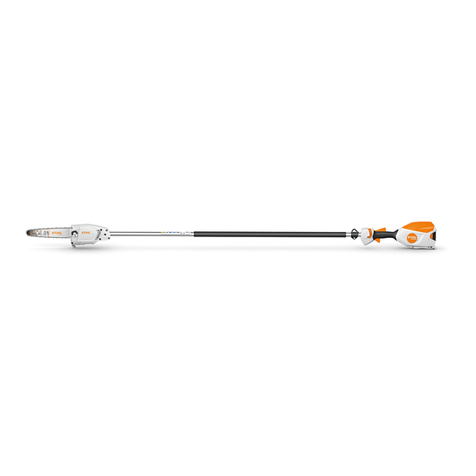
10 ENGLISH
Vibration
Left handle (Front grip) Right handle (Rear grip) Applicable standard
ah (m/s2)Uncertainty K (m/s2)ah (m/s2)Uncertainty K (m/s2)
2.5 or less 1.5 2.5 or less 1.5 ISO22867(ISO11680-1)
NOTE: The declared vibration total value(s) has been measured in accordance with a standard test method and
may be used for comparing one tool with another.
NOTE: The declared vibration total value(s) may also be used in a preliminary assessment of exposure.
WARNING: The vibration emission during actual use of the power tool can dier from the declared
value(s) depending on the ways in which the tool is used especially what kind of workpiece is processed.
WARNING: Be sure to identify safety measures to protect the operator that are based on an estimation
of exposure in the actual conditions of use (taking account of all parts of the operating cycle such as the
times when the tool is switched o and when it is running idle in addition to the trigger time).
EC Declaration of Conformity
For European countries only
The EC declaration of conformity is included as Annex A
to this instruction manual.
SAFETY WARNINGS
General power tool safety warnings
WARNING:
Read all safety warnings, instruc-
tions, illustrations and specications provided with this
power tool. Failure to follow all instructions listed below
mayresultinelectricshock,reand/orseriousinjury.
Save all warnings and instruc-
tions for future reference.
The term "power tool" in the warnings refers to your
mains-operated (corded) power tool or battery-operated
(cordless) power tool.
Cordless Pole Saw Safety Warnings
General precautions
1.
Before starting the tool, read this instruction man-
ual to become familiar with the handling of the tool.
2.
Do not lend the tool to a person with insucient expe-
rience or knowledge regarding handling of the tool.
3. When lending the tool, always attach this
instruction manual.
4.
Do not allow children or young persons under 18 years
old to use the tool. Keep them away from the tool.
5.
Handle the tool with the utmost care and attention.
6. Never use the tool after consuming alcohol or
drugs, or if feeling tired or ill.
7. Never attempt to modify the tool.
8.
Do not use the tool in bad weather conditions,
especially when there is a risk of lightning. This
decreases the risk of being struck by lightning.
9. National regulations may restrict of the use of
the tool. Follow the regulations about handling
of the tool in your country.
Personal protective equipment
1. Wear safety helmet, protective goggles and
protective gloves to protect yourself from
ying debris or falling objects.
2. Wear ear protection such as ear mus to pre-
vent hearing loss.
3.
Wear proper clothing and shoes for safe operation,
such as a work overall and sturdy, non-slip shoes.
Do not wear loose clothing or jewelry. Loose clothes,
jewelryorlonghaircanbecaughtinmovingparts.
4. When handling the saw chain or adjusting the
chain tension, wear protective gloves. Saw
chain can cut bare hands severely.
Work area safety
1. Keep the tool at least 15 m away from electric
lines and communication cables (including
any branches contacting them). Touching or
approaching high-voltage lines with the tool
can result in death or serious injury. Watch
power lines and electrical fences around the
work area before starting operation.
2.
Operate the tool under good visibility and daylight con-
ditions only. Do not operate the tool in darkness or fog.
3.
During operation, never stand on an unstable or slippery
surface or a steep slope. During the cold season, beware
of ice and snow and always ensure secure footing.
4. During operation, keep bystanders or animals
at least 15 m away from the tool. Stop the tool
as soon as someone approaches.
5. When working with two or more people, keep a
distance of at least 15 m or more between each
other, and put a supervisor.
6. Before operation, examine the work area for
wire fences, walls, or other solid objects. They
can damage the saw chain.
Preparation
1.
Before assembling or adjusting the tool, switch
o the tool and remove the battery cartridge.
2. Before handling the saw chain or adjusting the
chain tension, wear protective gloves.
3. Before starting the tool, inspect the tool for
damages, loose screws/nuts or improper
assembly. Sharpen blunt saw chain. If the saw
chain is bent or damaged, replace it. Check all
control levers and switches for easy action.
Clean and dry the grips.
